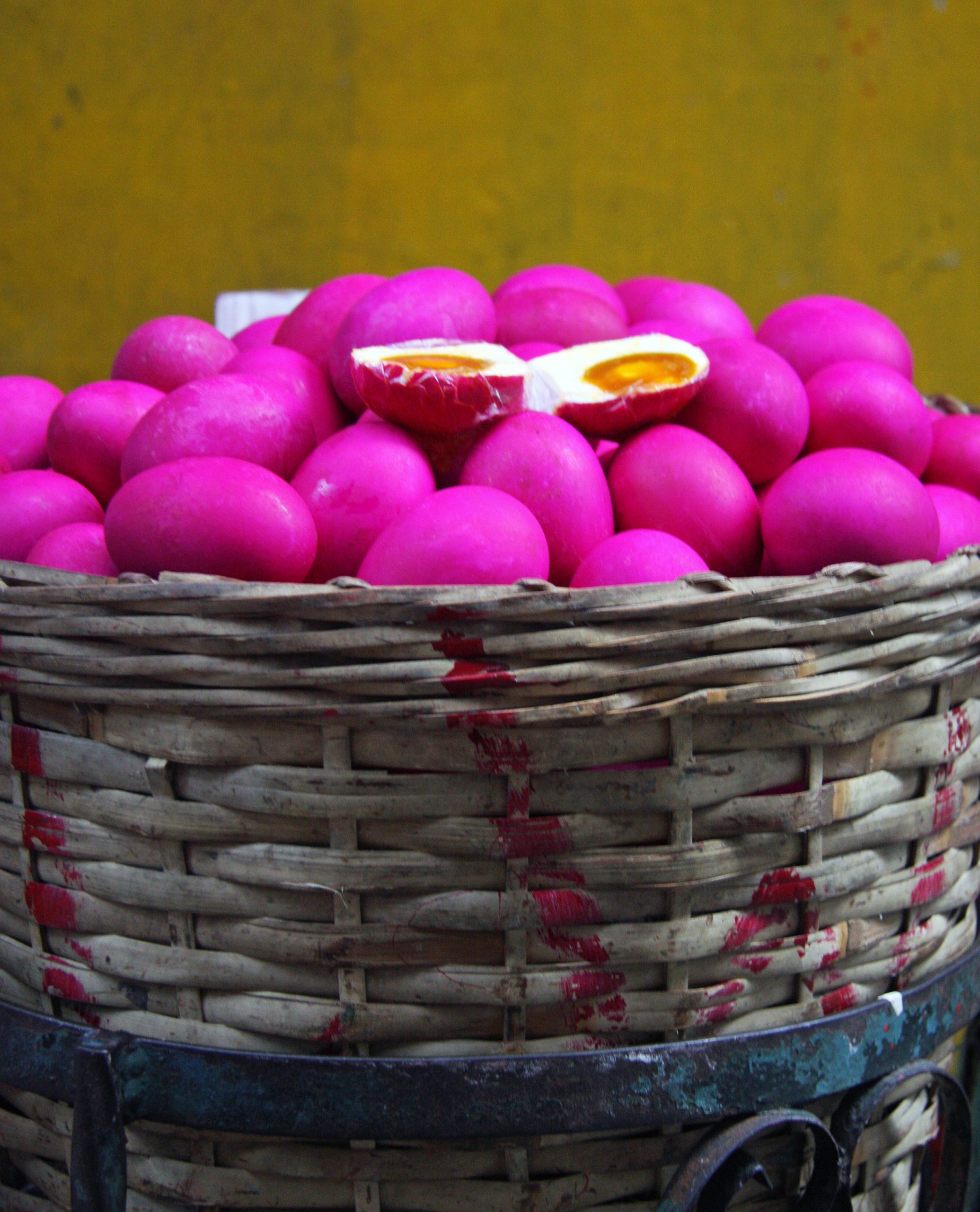
Duck embryo anyone? Bottoms up!
I have a confession while on a food tour in Manila. My attention isn’t entirely focused on the food on the Big Binondo Food Wok Tour through Manila’s Chinatown. For starters, I’m a little bit star-struck as not only is our delightful tour leader Ivan Man Dy, a local celebrity in his own right, but I’m retracing the steps of Anthony Bourdain. Secondly, it’s so hot that I wonder if I might actually morph into one of the sidewalk woks or satay grills on this food tour in Manila. Although Filipino cuisine is milder in the spice department than its Asian neighbours, the temperature is intensified by all the food sizzling around us.

Manila’s Chinatown markets
The hottest food tour in Manila
I might add here that a walking food tour in Manila, a city with one of the worst traffic problems in the world, may seem like a crazy idea. However, within the sprawling metropolis, Chinatown is a mini-city with one kilometre of eateries along the main drag of Ongpin Street. The Filipino capital is synonymous is often associated with poverty, however, very little of this is evident throughout the tour as the locals compete to see who can supply us with the most amount of food.
The Philippines serves a mixture of Spanish, Chinese, Malaysian, Japanese and American cuisines and you could say it’s like a dipping sauce combining a staggering array of flavours on this food tour in Manila. The Chinese brought rice, which is eaten with almost every meal. The Malays taught the locals how to make noodles and wonton soup in exchange for huge jackfruit, tubers and spices. The Japanese came, conquered, and left a bad taste in the locals’ mouths – but sadly didn’t think to teach them how to make sushi. During the fifty years the Americans stayed, their legacy was the Jeepney, the English language and fast food joints, like the franchise Jollibee dotted all over the country serving American style fast-food with a Filipino twist.
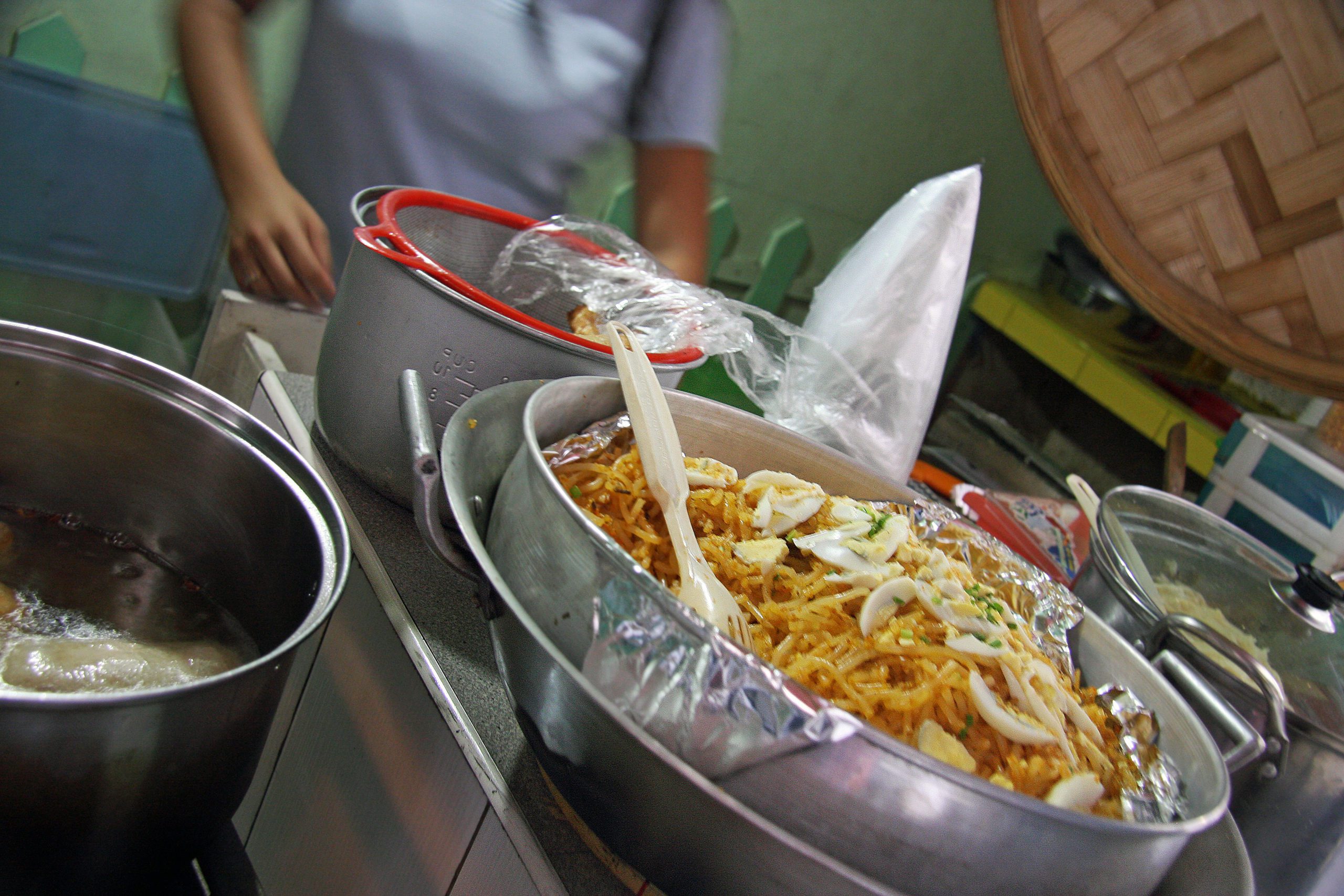
Oodles of noodles in Manila’s Chinatown
Much like chopsticks have been replaced with utensils, the Western influence is prominent as the Philippines was a Spanish colony for over 330 years. One left-over ingredient from the Spanish and integral to Filipino cuisine today is vinegar, and nowadays the sourness of kalimansi and guava is often added to many of the sauces. The Spanish introduced the method of sauteeing with garlic and onion, and even the local words prito or pinirito are derived from the Spanish word frito meaning fried or deep-fried. The Spanish also introduced paella to the Philippines, which is cooked over a flame in enormous pans and is very popular for festive occasions.

Curry in a hurry
Regardless of which region you’re visiting, it’s impossible to not notice that Filipinos have a fondness for deep-frying, and it is thought that even the name of the island of Cebu originated from the word sibu meaning animal fat. The aroma of cooking oil, fried meat and spices hangs in the thick air as Ivan leads with his pouting lips – a common gesture of the locals. I compliment him on his voluptuous lips that any Hollywood starlet would be envious of and he explains that many Filipinos use their pout as a gesture especially useful when ordering food. This truly is a culture who think with their mouths and stomachs as the locals virtually eat non-stop. Three meals a day just isn’t enough and they snack wherever they go, and this national past-time is known as merinda. Which is what we’re doing as we make our way through Chinatown sampling foods from cafes and stalls, some more makeshift than others. Our journey is known as turo-turo meaning point-to-point.
We sample the infamous sisig, the leftover bits of a pig including the cheek, nose and ear, which are finely chopped and cooked on a hot plate to form a crunchy layer on the bottom. Nothing is wasted in the Philippines. Next thing on the menu is pata, braised pork hung up to dry for twenty-four hours and cut into chunks and then deep-fried. We sample pancit, stir-fried noodles, which are often enjoyed as a snack and are likened to Filipino comfort food, much like Westerners resort to chicken noodle soup. During celebrations, noodles are mandatory and long uncut noodles symbolize a lenghty life, but today ours are cooked out on the street over an open flame with pork and vegetable strips. We learn that chicken is often roasted over an open flame and stuffed with rice and dried fruit. Just as we think we might go up in flames ourselves, Ivan offers crackling or fried pork rinds, chicharon, to be enjoyed with a variety of dipping sauces.

Oodles of noodles in Manila’s Chinatown
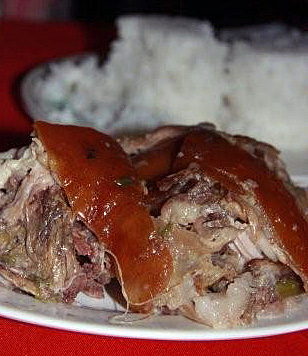
It mightn’t look pretty, but Lechon is the ultimate food-porn
Are you noticing a pork theme here? So it is of little wonder then that the most renowned delicay of all is lechon, the legendary suckling pig roasted over hot coals. Bourdain refers to this obscenely fatty dish as food-porn, if only for the health rating. There are variations of its preparation all over the country, for example in Cebu, about an hour south of Manila, lechon is not served with sauce because they proudly believe it doesn’t need any. Given that the crispy, crackly skin is so tender, with its flesh so moist, it’s a believable declaration. Naturally, in the true excessive nature of Manila, lechon is garnished with a heart-stopping sauce made from pig’s liver.
By now even Ivan, a life-long resident, is soaked to the bone in sweat and he whisks us off to the air-conditioned comfort of Mr Ube cafe. The earnings from the cafe go to volunteer firemen and the word ube means purple yam. Purple has practically become the national colour and we pass a purple fire-truck along the way and I wonder if they get requests to hose down sweaty tourists. Ivan gives us his closing speech and I feel a little sad that he won’t joining us for the rest of our Filipino adventure.
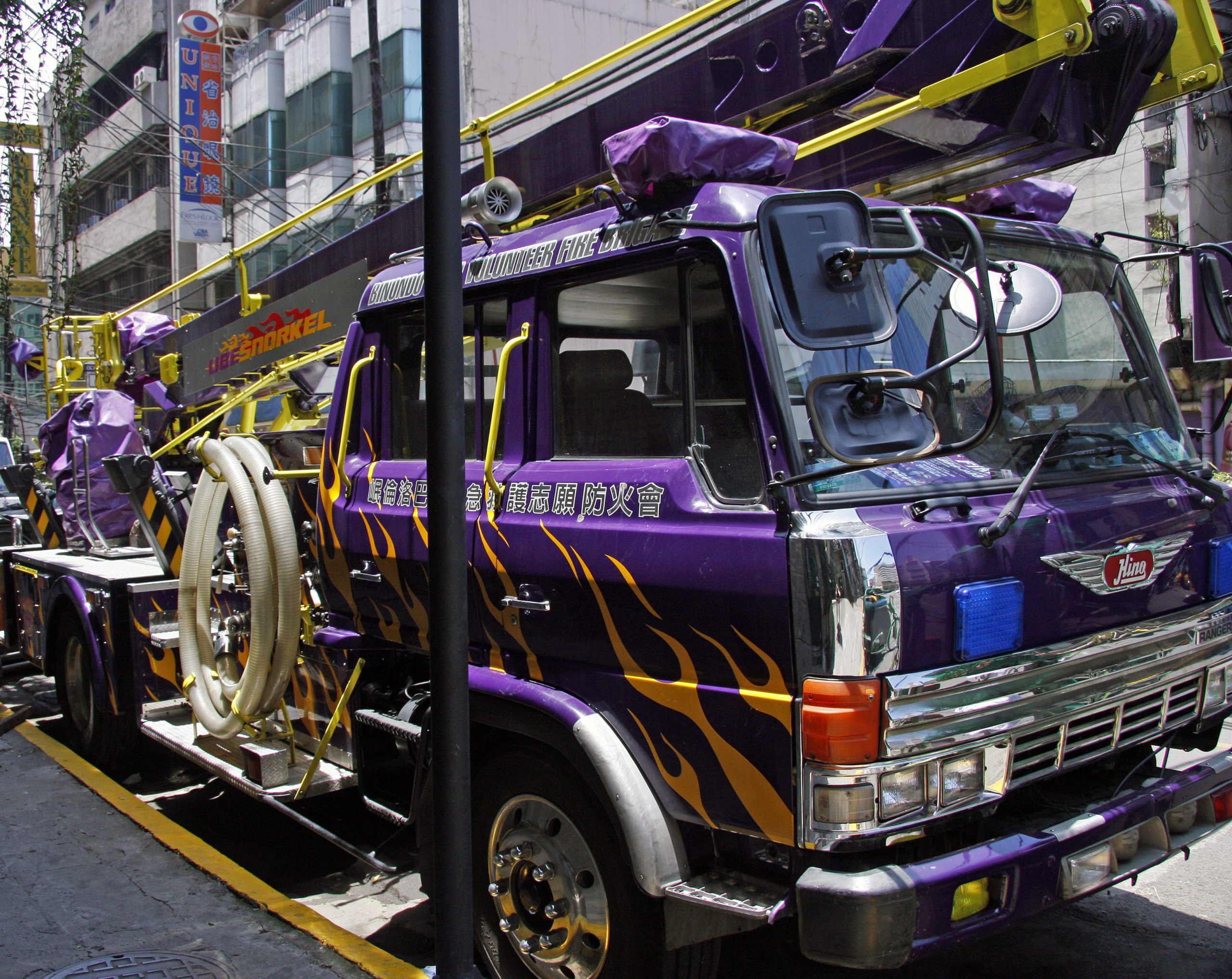
Manila’s purple theme extends to its fire trucks
There’s a theory that any gourmand will head straight for the markets when arriving in a new destination. Manila’s Chinatown is a culmination of the country’s cuisine, providing a range of food as generous as the locals are. The Philippines consists of over 7,000 islands, and after just one taste, you may even consider the country’s only Chinatown as another island.
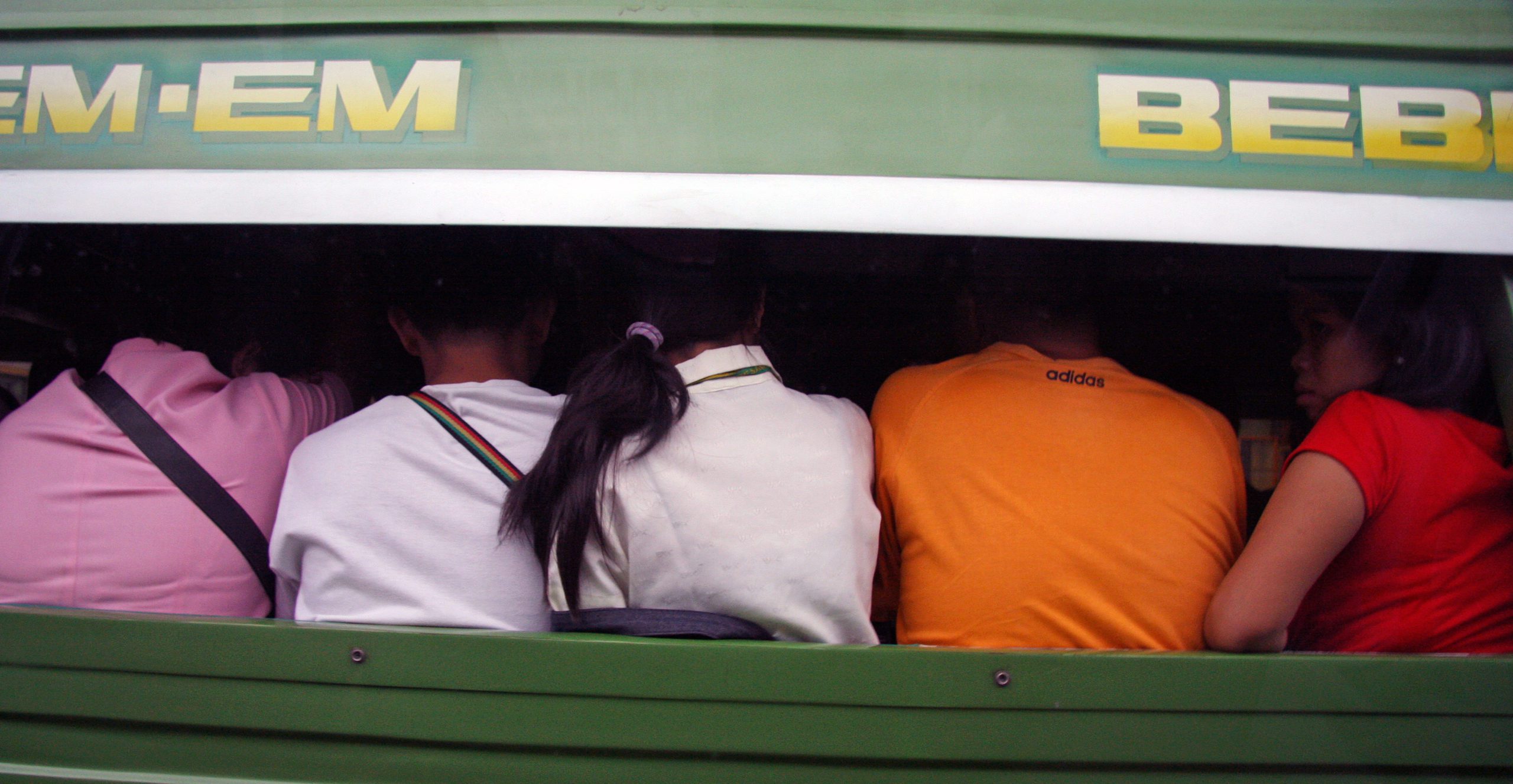
Sardines in a jeepney
Manila facts:
Join Ivan Man Dy at Old Manila Walks on the Big Binodo Food Wok tour details www.oldmanilawalks.com
Stay at Manila Diamond Hotel www.diamondhotel.com rates start at $120.00 AUD
Extra tidbits:
- For the adventurous try balut, boiled duck egg containing the embyro.
- Halo-halo an icy refreshment which can include ube, layered in a purple rainbow
- Given the Filipino’s love of meat, vegetarians will suffer but there is a dish called pinakbet consisting of pumpkin, string beans, eggplant, okra and other vegetables seasoned with garlic, onions, ginger, tomatoes, shrimp paste (optional) and coconut milk.
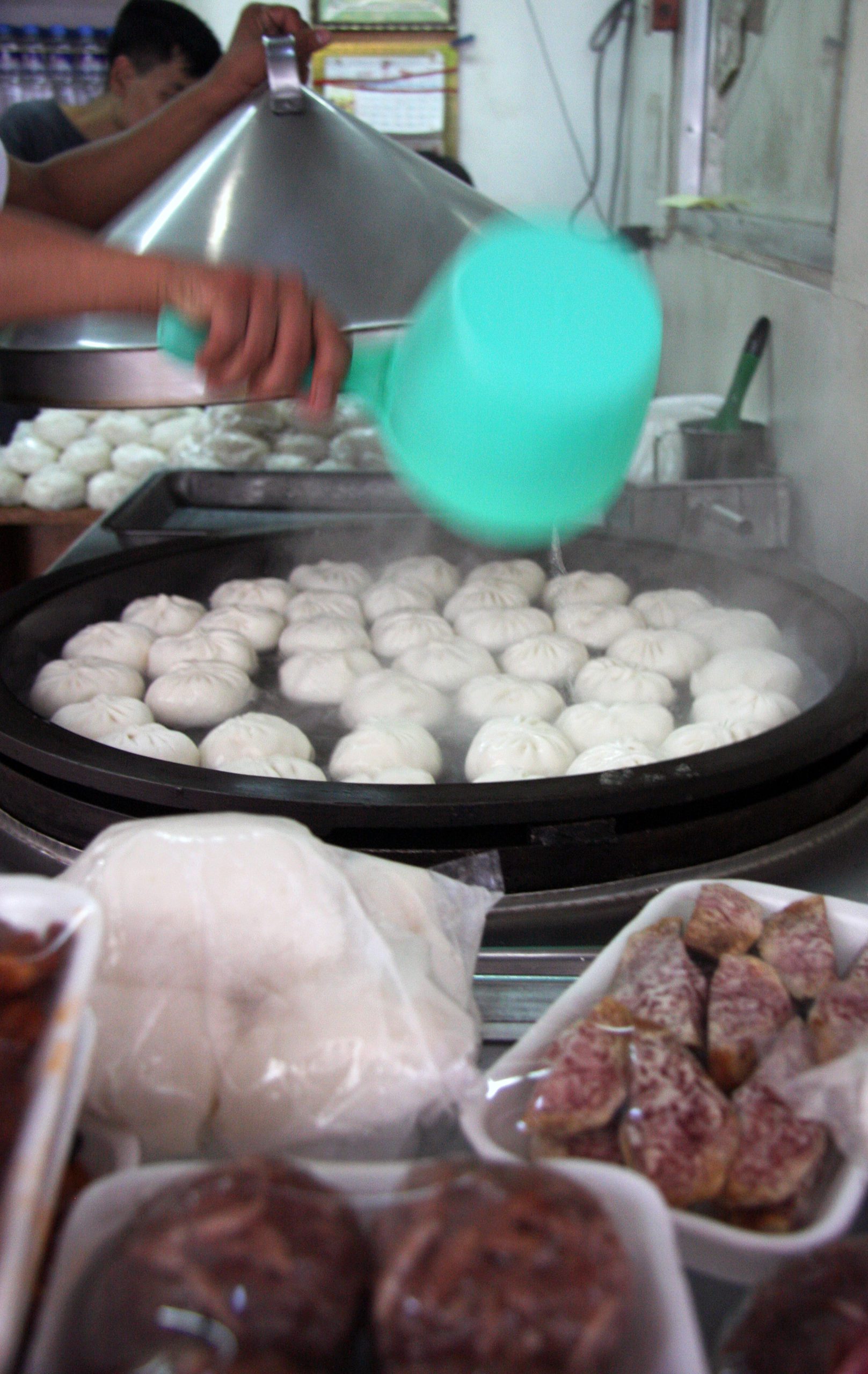
Nice bun’s
For more Filipino fun, please check out Divine Diversity: Holier than Cebu
Craving more travels? Please stay in touch by subscribing to Fluffy Towel today. Thank you and happy travels.


